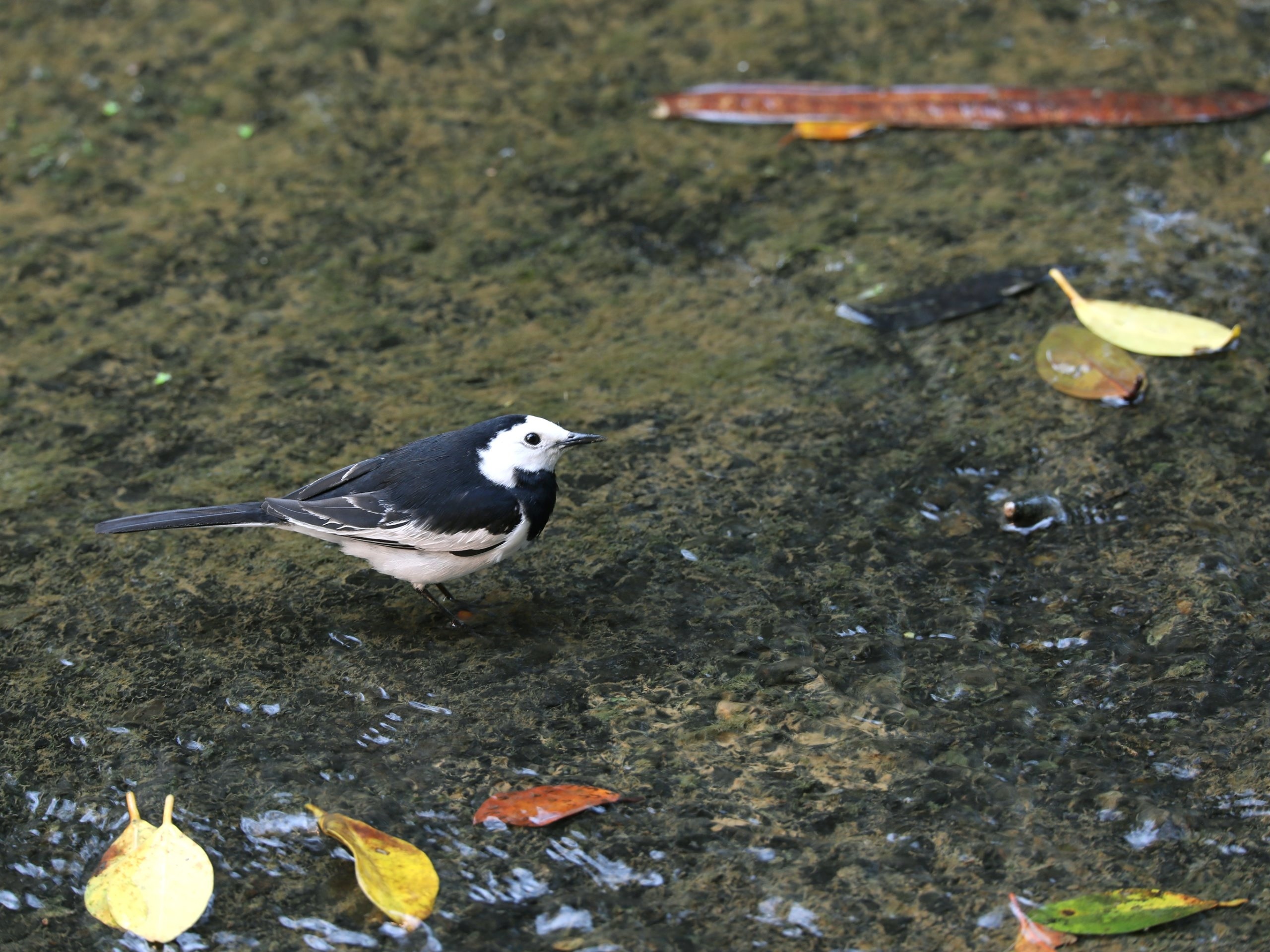白鶺鴒

說明/ 普遍留鳥與冬候鳥,分為白面白鶺鴒(附圖)、白鶺鴒與日本鶺鴒三個亞種,後兩者為冬候鳥,全長約16–18 公分。白面亞種本校常見,羽色黑白分明。喜愛在溪邊、池塘與水渠等處活動覓食,在離水較近的草地與空地也可見到。飛行時成上下大波浪狀,行走時尾巴會上下擺動。以昆蟲及種子為主食。因行走時搖尾,又常有回顧動作,古人將其視為代表手足提攜之情的祥禽,唐玄宗即著有「鶺鴒頌」一文加以歌詠。飛行時伴隨振動翅膀的節奏,發出清亮「唧– 唧唧–」之鳴叫聲。(陸維元攝)
A common resident bird and winter migrant. There are three subspecies: White-faced Wagtail (see pic), White Wagtail, and Japanese Pied Wagtail, and Japanese Pied Wagtail, the latter two are winter migrants, 16-18 cm in length. White-faced Wagtails are commonly seen on campus, with pronounced black and white feathers. It likes to frequent riverbanks, ponds, and ditches for feeding, and can also be seen in grasslands and bare areas close to water. Its flight resembles the motion of waves on the sea. When walking, its tail will move up and down constantly. It feeds mainly on insects and seeds. Due to its wagging tail and tendency to look back, it was considered a bird representative of brotherhood and praised in Emperor Xuanzong of Tang’s “Ode to Wagtails.” It makes a sharp “chisick-chisick” call during flight. (Photo courtesy of Lu Wei-yuan)
